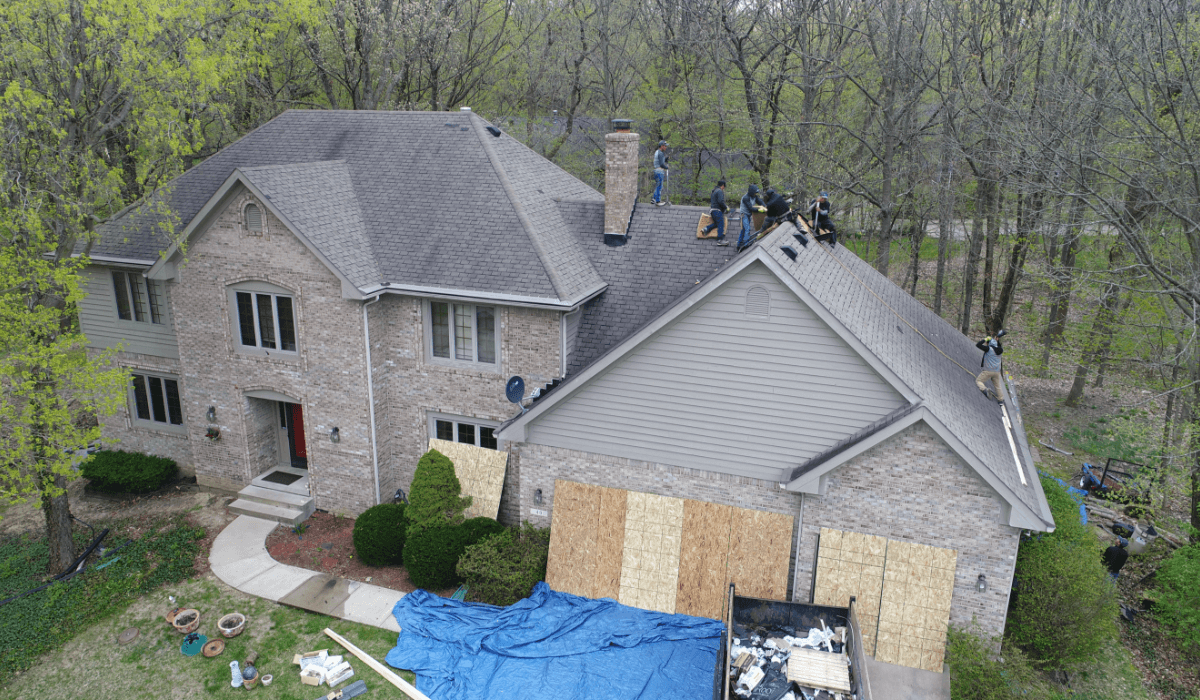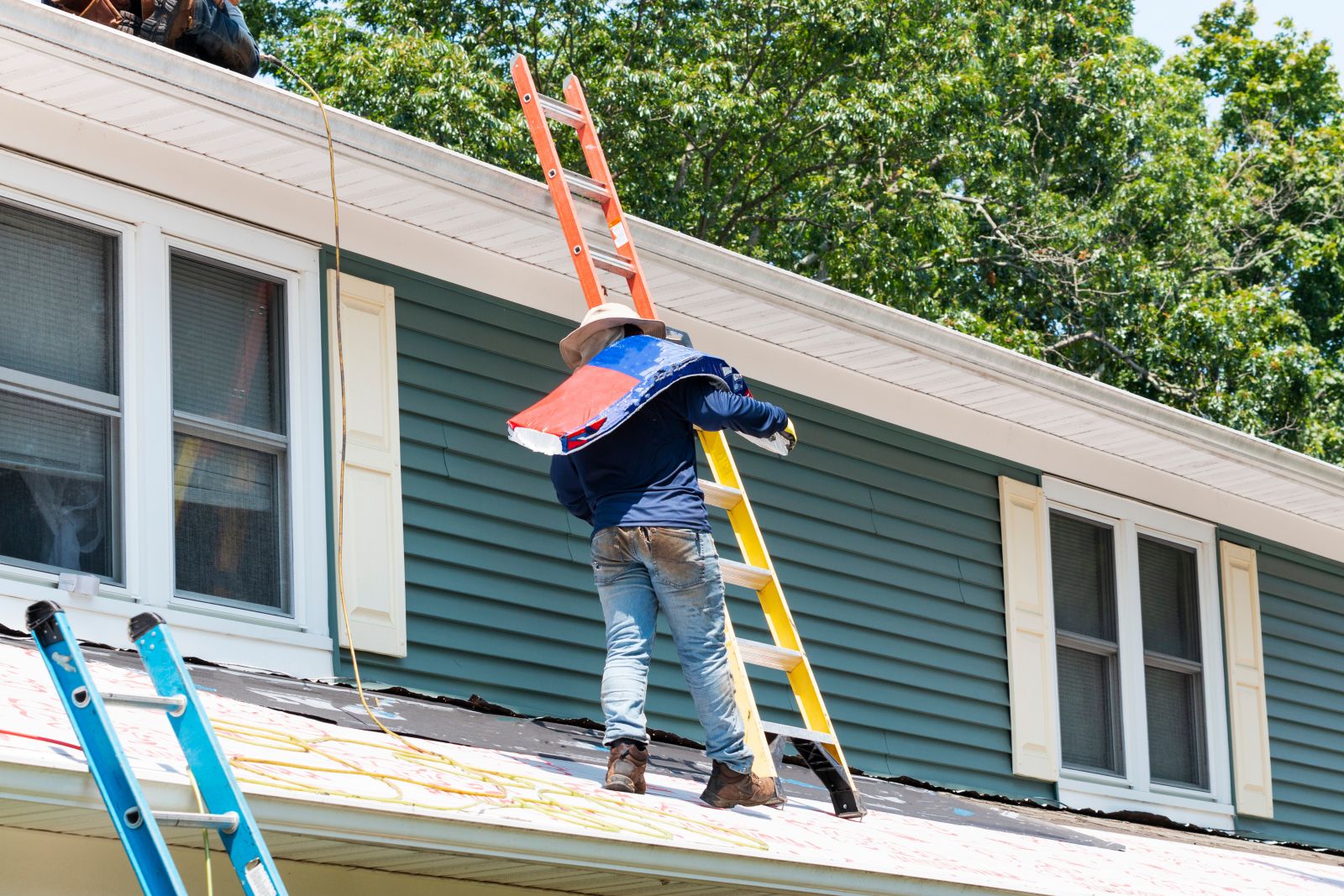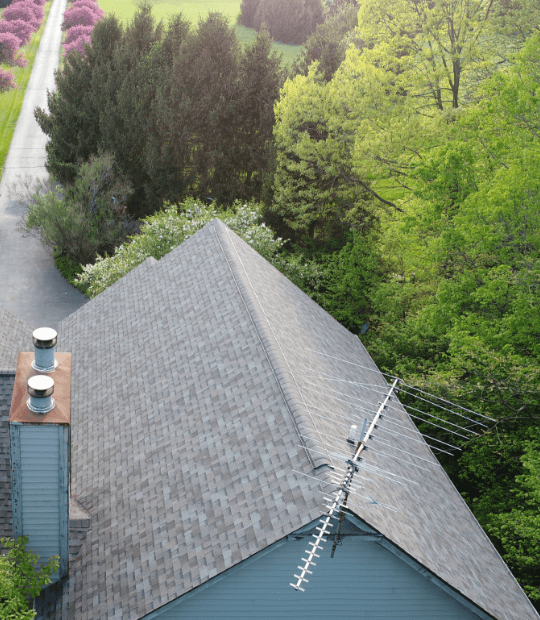Your roof is one of the most critical components of your home, protecting you and your belongings from the elements. However, like any part of your home, it can develop problems over time. Identifying and addressing these issues promptly is crucial to maintaining the integrity and longevity of your roof. At Wilkinson Roofing, we help homeowners in Lafayette, IN, tackle common roofing problems with effective solutions. Here are seven common roofing problems and how to fix them.
1. Leaks and Moisture
One of the most common roofing problems homeowners face is leaks. Leaks can occur for various reasons, including damaged shingles, cracked flashing, or improperly sealed roof vents. Moisture infiltration can lead to significant damage, including mold growth and structural issues.
Why Leaks Matter:
- Water Damage: Leaks can cause water damage to your home's interior, including ceilings, walls, and insulation.
- Mold Growth: Persistent moisture can lead to mold growth, which poses health risks.
- Structural Damage: Prolonged exposure to moisture can weaken the structural components of your roof.
How to Fix Leaks:
- Inspect Regularly: Conduct regular inspections to identify signs of leaks, such as water stains or damp spots.
- Seal Cracks: Use roofing sealant to seal any visible cracks or gaps.
- Replace Damaged Shingles: Replace any damaged or missing shingles promptly.
Learn more about our roof repair services to address leaks and prevent further damage.
2. Damaged Shingles
Shingles can become damaged due to weather conditions, age, or poor installation. Common signs of shingle damage include curling, cracking, or missing shingles. Damaged shingles can compromise your roof's ability to protect your home.
Why Damaged Shingles Matter:
- Water Infiltration: Damaged shingles can allow water to penetrate the roof, leading to leaks.
- Reduced Insulation: Missing shingles can reduce your roof's insulation, increasing energy costs.
- Aesthetic Appeal: Damaged shingles detract from your home's curb appeal.
How to Fix Damaged Shingles:
- Inspect After Storms: Check your roof for damaged shingles after severe weather.
- Replace Shingles: Replace any damaged or missing shingles to maintain the integrity of your roof.
- Use Quality Materials: Use high-quality shingles and professional installation to prevent future issues.
Discover our roof replacement services to ensure your roof is in top condition.
3. Poor Ventilation
Proper roof ventilation is crucial for regulating temperature and moisture levels in your attic. Poor ventilation can lead to various problems, including increased energy costs and premature aging of your roof.
Why Ventilation Matters:
- Temperature Regulation: Proper ventilation helps regulate attic temperatures, reducing the load on your HVAC system.
- Moisture Control: Good ventilation prevents moisture buildup, reducing the risk of mold and rot.
- Roof Longevity: Adequate ventilation extends the lifespan of your roof by preventing overheating and moisture damage.
How to Fix Ventilation Issues:
- Install Vents: Ensure your roof has adequate intake and exhaust vents.
- Check Insulation: Make sure attic insulation does not block ventilation openings.
- Professional Assessment: Have a roofing professional assess and improve your ventilation system.
Learn about our roof inspection services to ensure your roof's ventilation is adequate.
4. Flashing Damage
Flashing is the material used to seal joints and seams around roof features such as chimneys, vents, and skylights. Damaged or improperly installed flashing can lead to leaks and water damage.
Why Flashing Matters:
- Water Sealing: Flashing prevents water from seeping into joints and seams.
- Protection: Proper flashing protects vulnerable areas of your roof from water damage.
- Durability: High-quality flashing materials withstand weather conditions and last longer.
How to Fix Flashing Issues:
- Inspect Regularly: Check flashing for signs of damage or wear, such as cracks or rust.
- Repair or Replace: Repair any damaged flashing or replace it with new material.
- Professional Installation: Ensure flashing is properly installed by a professional to prevent future issues.
Explore our storm inspection services to check for flashing damage after severe weather.
5. Ponding Water
Ponding water occurs when water collects on flat or low-slope roofs due to poor drainage. Prolonged ponding can lead to leaks, structural damage, and reduced roof lifespan.
Why Ponding Water Matters:
- Water Damage: Standing water can seep into the roof, causing leaks and water damage.
- Structural Stress: Excess water weight can stress the roof structure, leading to sagging or collapse.
- Roof Lifespan: Continuous ponding accelerates roof deterioration, reducing its lifespan.
How to Fix Ponding Water:
- Improve Drainage: Ensure your roof has proper drainage systems, such as gutters and downspouts.
- Adjust Slope: Adjust the roof slope to prevent water from collecting in low areas.
- Regular Maintenance: Keep gutters and drains clear of debris to facilitate proper water flow.
Learn more about our roof replacement services to improve drainage and prevent ponding water.
6. Shrinkage
Shrinkage occurs when roofing materials contract, leading to cracks and other damage. This issue is common with certain roofing materials, such as EPDM and modified bitumen.
Why Shrinkage Matters:
- Cracking: Shrinkage can cause roofing materials to crack, leading to leaks.
- Seam Separation: It can also cause seams to separate, compromising the roof's integrity.
- Material Damage: Continuous shrinkage weakens roofing materials, reducing their lifespan.
How to Fix Shrinkage:
- Inspect Materials: Regularly inspect roofing materials for signs of shrinkage.
- Repair Seams: Seal any separated seams promptly to prevent leaks.
- Replace Materials: Replace roofing materials prone to shrinkage with more stable options.
Discover our roof repair services to address shrinkage and prevent further damage.
7. Tree Damage
Overhanging tree branches can pose a significant risk to your roof. Falling branches, leaves, and debris can cause damage and clog gutters, leading to water buildup and leaks.
Why Tree Damage Matters:
- Physical Damage: Falling branches can puncture or damage roofing materials.
- Clogged Gutters: Leaves and debris can clog gutters, causing water to back up and damage the roof.
- Moss and Algae Growth: Overhanging branches can create a damp environment conducive to moss and algae growth.
How to Fix Tree Damage:
- Trim Branches: Regularly trim overhanging branches to prevent them from damaging your roof.
- Clean Gutters: Keep gutters clean and free of debris to ensure proper drainage.
- Remove Debris: Remove any leaves or debris from the roof surface to prevent water buildup.
Learn about our roof maintenance services to protect your roof from tree damage.
Conclusion
Addressing common roofing problems promptly can save you time, money, and stress in the long run. At Wilkinson Roofing, we provide comprehensive roofing services to help homeowners in Lafayette, IN, maintain and protect their roofs. Whether you’re dealing with leaks, damaged shingles, poor ventilation, or other issues, our team of professionals is here to help.
Contact us today to schedule a roof inspection and learn more about our services. Visit our contact page to get in touch with our expert team. Le



